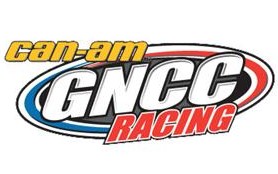GNCC Racing Series Profile
In the mid 1970s, enterprising motorcycle racing promoter Dave Coombs stumbled onto the small West Virginia town of Davis. Looking at the beautiful yet rugged terrain, “Big Dave” realized it would be the perfect spot to hold a motorcycle race. And best of all, it would be a tough one, an event only the strongest riders and machines could even finish. This was the way Big Dave liked it. He called the race the Blackwater 100 – “Blackwater” for nearby Blackwater Falls, and “100” for the number of miles in the race.
Blackwater soon became legend as “America’s Toughest Race.” As Dave’s company, Racer Productions, grew, he decided to host the first-ever AMA National Hare Scramble event in 1979 at High Point Raceway. The event was a success, and a few years later the AMA started the National Hare Scramble Series, with different promoters in different areas of the country holding the events.
Meanwhile, Dave and his wife Rita were holding several 100-mile-long events like the Blackwater, and the series became known as the Wiseco 100 Miler Series. The series evolved into the Grand National Cross Country Series in the early 1980s, where it ran alongside the AMA NHS Series, as a few events counted for points in both championships.
But it’s the GNCC Series that has experienced the most growth. Three-wheeled ATVs were added to the program in 1983, and four-wheelers became popular a few years later. Instead of 100-mile races, which often lasted five hours, the events were pared down to two hours for ATVs and three for bikes. The ultra-tough races were cool, but it really cut back on the amount of people willing to come try it.
By then, the first stars of GNCC Racing had been born…. “Fast” Eddie Lojak and the rest of the Lojak clan took control of the first bike GNCC title runs, with Ted Trey and Tom Tokay emerging as the first ATV stars. By the 1990s, GNCC Racing was known nation-wide, with a lot of its success owed to the Blackwater, which still reigned as the toughest, gnarliest event to both ride and watch. Alas, the town of Davis shut the doors on the Blackwater in 1993, but by then the GNCC Series was going strong even without it. This was the era of the “Great Scotts” – Kentucky’s Scott Summers and Ohio’s Scott Plessinger – as well as “Fast” Freddy Andrews, an aggressive motocrosser-turned woods racer. Meanwhile, the dynamic ATV duo of Indiana’s Bob Sloan and Pennsylvania’s Chuck DeLullo battled for the four-wheeled title.
Summers not only became the series’ biggest star, but also became a hero to the whole off-road racing community, as his professionalism, business sense, and public relations skills introduced the sport to a much larger audience. Summers became one of the first off-road racers in the U.S. to make a real living as a racer.
He wouldn’t be the last. Team Suzuki imported its powerful factory team into the series after a successful run of AMA National Enduro and AMA National Hare Scrambles Championships. The team was led by Rodney Smith, a former motorcrosser who had won races all over the world, but found himself most comfortable in the woods of the Eastern U.S. When Smith, a Californian riding on a California-based team, signed on with GNCC it signaled the emergence of the GNCC Series as the nations’ most prestigious off-road series.
Four-Wheeled Frenzy
The ATV racing world was struggling at the time, though. A rash of safety concerns in the late 1980s had scared the ATV manufacturers from the racing scene. Factory rides dried up, and soon the racing machines did too, as Honda dropped their dominant TRX250R from its lineup in 1989. But the sport would not die. The concerted efforts of the ATV aftermarket industry and a determined gang of racers kept the flame alive. GNCC ATV racing actually grew in the 1990s despite the lack of stock equipment. The biggest GNCC ATV superstar turned out to be a Pennsylvanian named Barry Hawk, who notched an amazing seven-straight GNCC ATV Championships from 1993 through 1999. By then, Hawk and his competitors were riding machines made up almost entirely of aftermarket equipment, which made them faster, lighter and better suspended than the old 250Rs, even though they still looked just like the old Hondas.
Similarly, utility ATV racing took off as well. Old utility ATVs were built like tractors, designed only for low-speed farm use. They were heavy and used primitive suspension designs. But somewhere along the way, manufacturers realized that all ATVs should be fun, too, and they started injecting a dose of sport into their work machines. GNCC racers were all too eager to put these sport/utility ATVs through their paces on the rugged, muddy GNCC tracks.
Barry Hawk’s rise through the ATV ranks culminated in a series of battles with Sloan, one of the all-time toughest GNCC racers. Known as “The Ironman,” the Indiana resident raced with grit and determination and notched two GNCC titles. Sloan was so tough that he would win ATV races on Saturday and then come back and race the bike events on Sunday, lending credibility to his Ironman moniker. Hawk wanted to take Sloan down and win ATV championships, so he decided to do the same thing. He raced the bike events on Sunday and started advancing quickly. In fact, he started putting in more effort on his expanding bike exploits than his ATV riding.
And he had lost his main competitor. Sloan was diagnosed with a heart problem, but he kept on racing in his true Ironman spirit. But one day, his heart gave out in a hard-fought race to the finish. One of the series’ greatest champions had passed doing one of the things he loved most – battling for the win in another cross-country race. In his memory, the GNCC Series runs the season-finale in Bob’s home state of Indiana, and named the race “The Ironman”.
The Vision
The GNCC Series is the product of Dave Coombs. He poured his heart and sweat and life into the series, and with the help of his family, the sport was blossoming to unfathomable levels. It wasn’t rare to see Dave lay out the course, run the riders’ meeting, patrol the track, give a TV interview, help guide some photographers on where to take pictures, keep tabs on the facility, pits and parking, and then manage to go out and race a few laps himself!
The series lost Big Dave in 1998, which left a major void in the sport he helped create. His family stepped up and continued to run the series, keeping true to Big Dave’s vision. Dave’s son-in-law, Jeff Russell, won the 1991 AMA National Enduro Championship. A few years later he became a full-time member of the Racer Productions’ team, working side-by-side with Big Dave building the tracks. JR, as he is called, is today’s GNCC Trail Boss.
At the turn of the millennium, changes were afoot in the series. Hawk had progressed so far that he earned a full factory contract with Yamaha – but as a bike racer. The idea of factory sponsorship for ATV racing was unrealistic at the time, so Hawk had to go where he could to make a living. He parked his ATV for the last time in 1999, which led to a torrid chase for the 2000 four-wheeled title. Ultimately a young Kentucky rider named Bill Ballance claimed the title. Ballance was part of a Southern surge in the series, with more riders from the south joining the tour as more races were being hosted down there. Help came in from a variety of Southern figures, as well, like Buren Hamrik. Buren runs the popular Mid-East Hare Scramble Series in the Carolinas, but joined the GNCC crew to assist JR at the races.
The series was about to grow a whole lot further than just into the south, however. In 1999, Australian off-road sensation Shane Watts ventured to the U.S. after an incredible run through the international enduro scene. Watts claimed the overall win at the 1998 International Six-Days Enduro riding a 125 – an unheard of feat. Then he headed to the U.S. with the help of KTM, and soon he started winning races here, too. After a knee injury knocked him out of the ’99 title chase, he came back in 2000 for one of the most dominant GNCC runs in history. Watts amazingly won races on five different sizes of KTM motorcycles.
Watts’ personality drew plenty of attention, too, which was great for the series. Summers, the main star, broke his femur in a big crash while practicing at his house, and was unable to regain his old form. Watts kept the fans coming, though. He was brash and outspoken. He showed up at all sorts of events – even motocross and supercross – and rode well at them all. He was fun and the fans loved it. Unfortunately, Watts’ personality cost him as much as it paid him. He suffered through a huge string of injuries and usually didn’t take the time to heal from them properly before returning, believing he could still win races while at less than 100 percent. As a result, the injuries kept compounding themselves. Many call Watts the Travis Pastrana of off-road, as his brilliance was amazing, yet so short-lived due to injury.
New Heroes
Smith proved to be the ultimate GNCC lifer, as he fought off the “too-old” moniker to take the GNCC title back in 2001, and claim it again in 2002 and again in 2004 at the age of 40. But the competition was coming from a new generation of young talent. Several stars broke through, such as Jason Raines, a young rider from Washington who grew up reading about Summers, Smith and Andrews, and then packed up a van with a bike and his belongings and moved to Pennsylvania to chase the GNCC dream. Raines was one of just many young talents to join the pro GNCC chase, and the competition in the early 2000s was at an all-time high. Even Summers returned for the 2004 season, joining an incredible collection of champions on the pro bike starting line. But amazingly, perhaps the strongest of all turned out to be the quad guy: Hawk.
Hawk won his first bike race in 2001. He won another in 2002, and by 2003 had the game figured out, and he won the series title. With eight GNCC Titles, Hawk is the most celebrated GNCC racer of all – or is he?
It’s a good thing Hawk had figured out the bike, because Ballance was busy trying to break all of Hawk’s ATV records. The competition was stiff, but Ballance kept fending off the herd year after year. The efforts of Matt Smiley, William Yokley and Brad Page couldn’t stop Ballance from winning title after title. His championships were gaining profile, too. First, Honda introduced an ATV to rival their old 250R, the 1998 TRX400EX. This gave plenty of average riders a machine that could be raced competitively in the woods. The push to put production-ready machines at the top led Racer Productions to introduce a separate Pro class for them, dubbed Pro Production. History was made at the Sparta, Kentucky round in 2002, when veteran Chad DuVall rode a Four-Stroke Tech prepped 400EX to the overall victory, proving that production machines were finally ready to compete with the aftermarket machines again.
Then Suzuki introduced its 400EX fighter – the Quad Sport Z400 – in 2003. It was one step closer to the vaunted 250R. Suddenly, Yamaha blew everything wide open with its 2004 YFZ450, which closed the gap to the old Honda down to nothing. Production machines were now the standard for the sport.
So was Ballance. He kept winning, and Yamaha soon offered him something almost unheard of: a factory contract. It wasn’t long before his new young challenger, Chris Borich, had a deal with Honda to ride their new TRX450R, and then he eventually moved to Suzuki. Yokley had a deals with Suzuki, Kawasaki and Polaris, and even brought in an outside sponsor through the National Guard. New manufactuers like Can-Am and KTM jumped in with race machines and factory rides as well.
The other GNCC classes kept growing, too. The series had to split into two races, a morning and afternoon race, in 2001 due to growth. The morning race created its own stars, like seven-time Women’s Champion Traci Cecco, who scored a factory Yamaha deal. The Utility classes evolved from a class for farmers into a full-blown race division, with factory teams and hungry privateers pushing it every week.
GNCC Racing introduced Youth ATV Racing in 2004, and the numbers have grown. And in 2008, a whole new division of action, the UTV Side-by-Side Series, began would could end up being a very big series of its own.
GNCC Racing started airing on television in 2001 on the FOX Network. This exposed the sport to a whole new audience. Plus, all of the manufacturers were soon producing machines that were competitive and reliable for this type of racing, which made the sport that much more accessible. The numbers are now staggering, as nearly 7,000 different people competed in a GNCC races in both 2007 and 2008.
In 2005 American Suzuki signed on as the series’ first title sponsor, bringing a whole new level of sponsorship implementation and activation to the circuit. But it was not long until Can-Am, an ATV company, raised the bar to a whole new level in 2007 with its unprecedented series support.
Superstars have formed at all levels. The ATV Utility classes have blown up, with riders like Mike Penland and Scott Kilby becoming household names and getting their own factory deals. Racers are moving from the GNCC Youth racing series and quickly working their way through the amateur ranks and into factory rides, like young guns Charlie Mullins and Thad DuVall. And there are a lot more fans watching the action as well.
The bike series has enjoyed one more boost thanks to its’ next international champion. KTM imported Finland’s ten-time World Champion Juha Salminen to the U.S. to pursue the 2005 title. Juha didn’t just win, he dominated. He did it again in 2006, and then finished the year by winning the ISDE overall. Salminen’s class and grace helped cement the GNCC Series on the international map. When Salminen elected to return home to Finland after winning his titles, the Red Bull KTM team replaced his with David Knight from the Isle of Man. He won the ’07 and ’08 titles to keep the international theme going-along with top competitors who hail from Australia and New Zealand. Today, similar GNCC-type series have popped up all over the globe. England, Germany, Italy, and Japan all run similar series, a nod to the success of the GNCC format and brand.
It’s also a big congratulations to a man named Dave Coombs, who thought this whole thing up 30 years ago. Even with all the growth, you’ll still see most of the familiar names in the sport at the races. They have realized, like many others, that there are very few sports as fun and competitive as GNCC Racing. And no matter what the series has been called, there has always been camaraderie and a family atmosphere at the events. Winner or loser, pro or amateur, GNCC Racing is all about simply trying your best against the terrain. It’s the way Big Dave wanted it back then, and it’s the way it remains today.
Growth is constant in GNCC Racing, but the same elements that started it remain the same. This is good, fun, family racing. We’ll see you at the track and prove it.
How GNCC Racing Works
Six races are held each weekend. Each race contains several classes, with each class separated into separate starting-line rows that begin one minute apart. On ATV day, Youth riders aged 6 – 15 race for one hour starting at 8 a.m. A two-hour race for the Women, Utility, Super Senior and Novice classes starts at 10 a.m., and then the Pro, Pro Am, A and B riders race at 1 p.m. On Bike days, Youth riders aged 7 – 15 race for 90 minutes at 8 a.m.; Women, Super Senior and Novice riders race for two hours at 10 a.m.; and the Pro, A and B riders race for three hours starting at 1 p.m.
Each class is scored separately using a computerized transponder scoring.
GNCC courses usually run between 10 and 12 miles long for adult classes and 3-5 miles for youth.
Over 1500 riders will compete during a GNCC weekend, and they hail from all 50 states, as well as Europe, Asia and Australia.
The top pro racers make a lucrative living racing the series thanks to prize money and sponsorship endorsements. Racing is a full-time job for a GNCC championship contender.
About GNCC Racing
The AMA/ATVA-sanctioned Grand National Cross Country series is America’s premier off-road racing series. The 13-round race series stretches through the eastern US, starting with the season-opener in Florida in March and concluding with the season-finale in Indiana in October. The GNCC series is produced exclusively by Racer Productions, a Morgantown, West Virginia-based racing production company with over 30 years of experience in the industry. Cross-country racing is one of the most physically demanding sports in the world. The riders must navigate rugged terrain such as woods, mud, dirt, rocks and jumps for nearly three hours, while racing against the best talent in the world.
The GNCC Championship has drawn interest internationally, as riders from Europe, Africa, Australia and New Zealand compete regularly, usually backed by massive factory teams with an array of technicians at their disposal. Upwards of 1500 racers compete at each GNCC round on custom-built high-performance motorcycles and ATVs. The race action draws several thousand fans each weekend as well as a loyal following through the series television show on the Versus Network here in the US, on the Fox Australia network in Australia, and on Motors TV in over 55 different European countries, as well as media coverage in off-road racing publications around the world. The growth of the series makes GNCC big business, but the core value of the series remains: easy-access, family-friendly, low-pressure racing.
More informations can be found at: www.gnccracing.com
Category: Company Profiles











